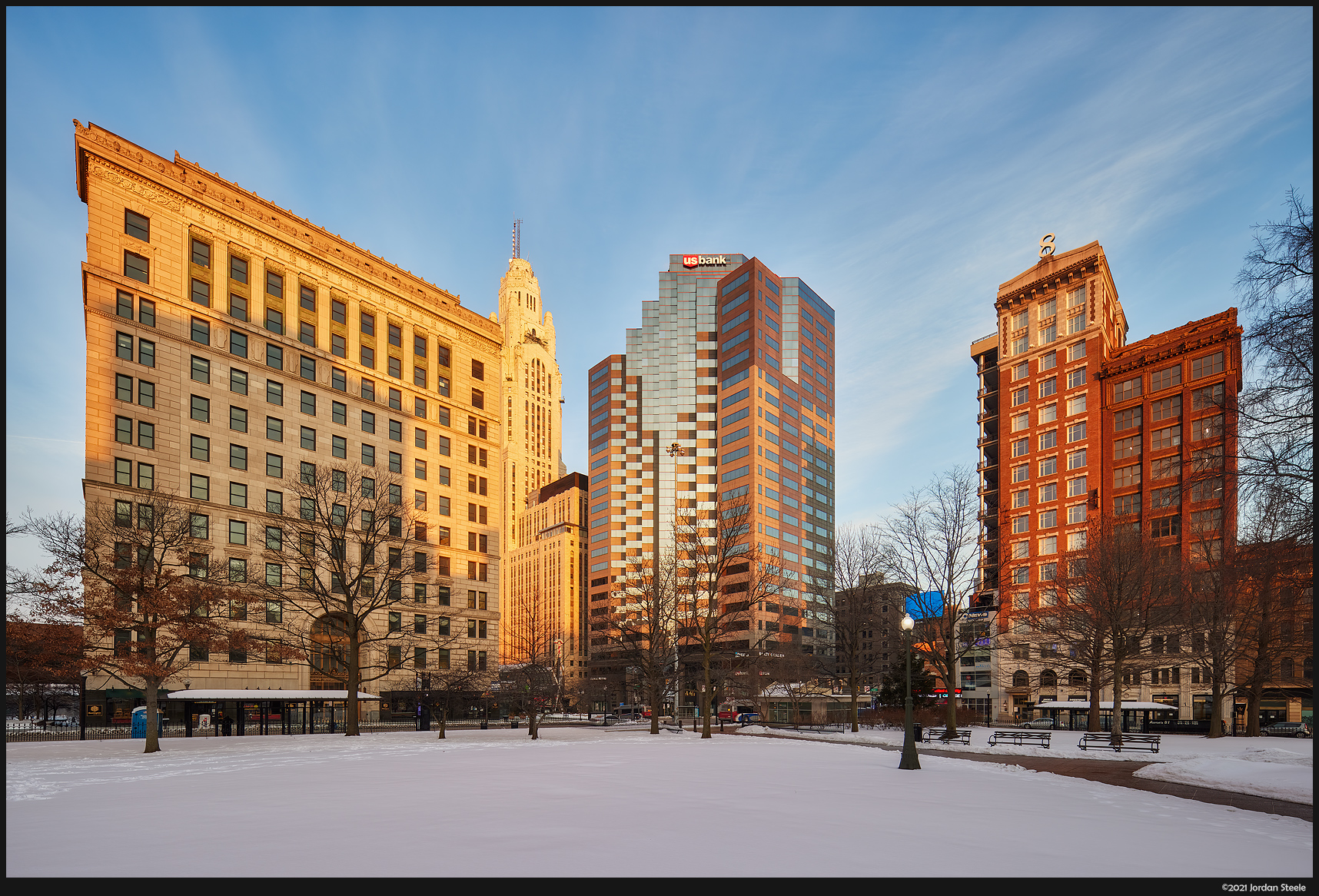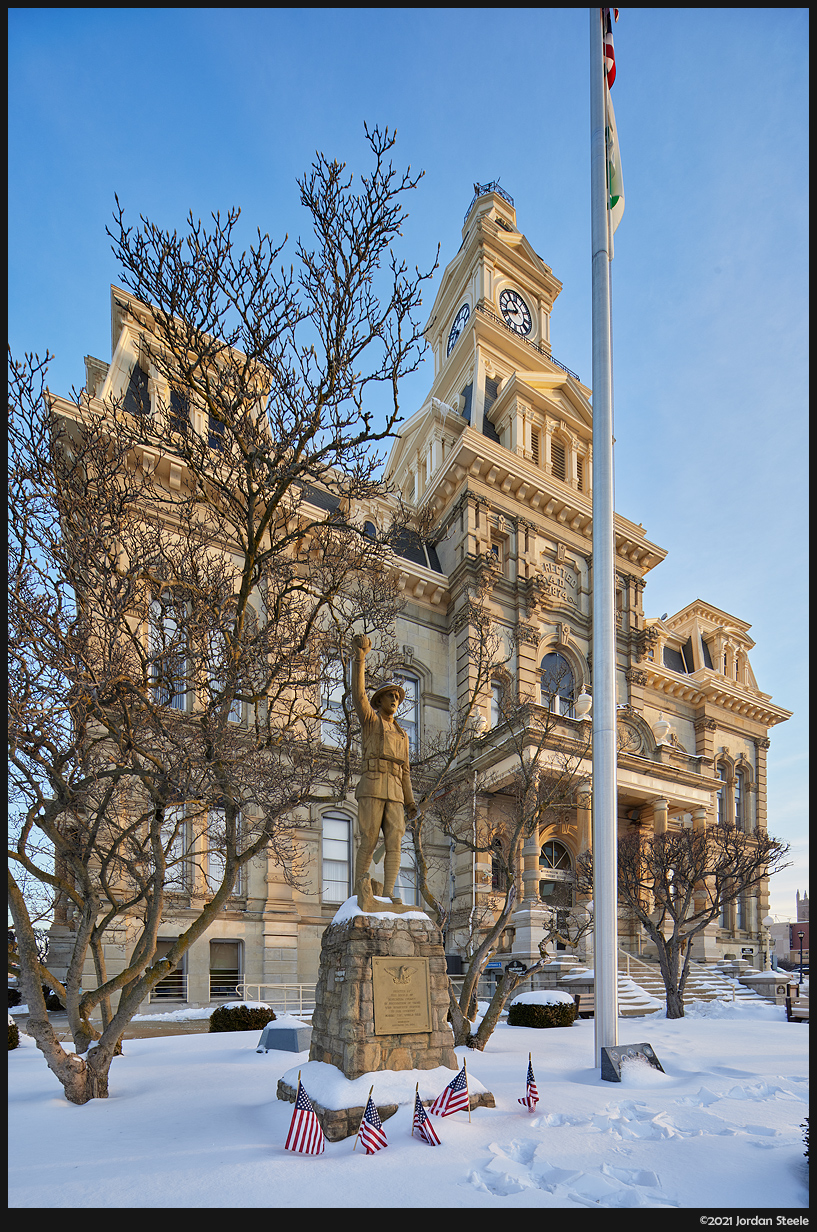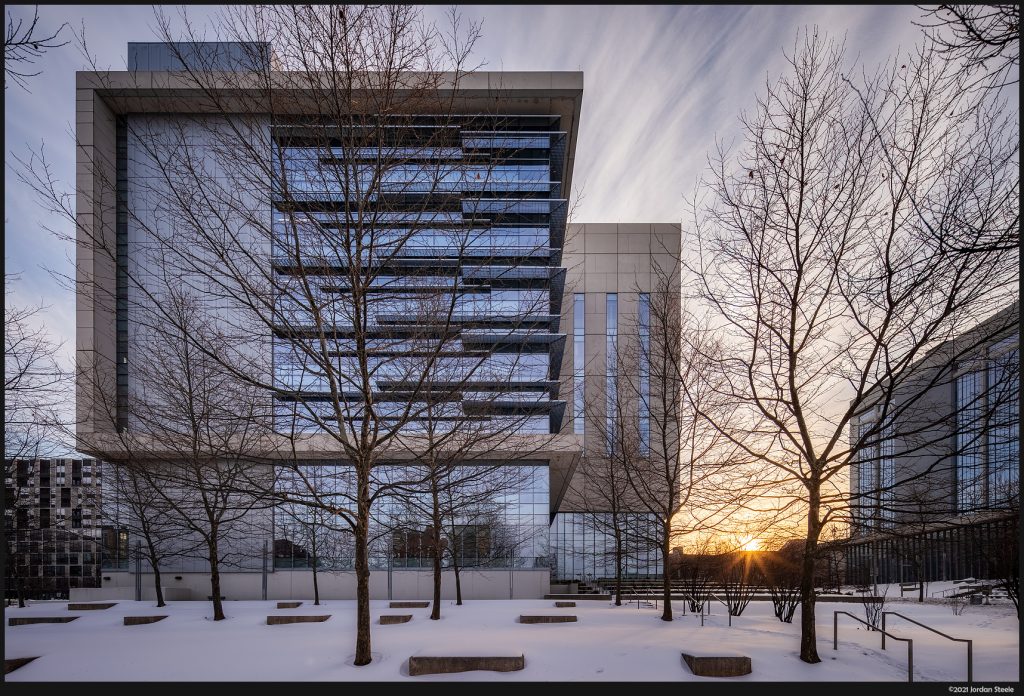Image Quality
Evaluating image quality on an ultra-wide shift lens is a bit of a challenge. This lens really has nothing else in the world to compare it to, being the widest shift lens ever made. However, based on other wide-angle shift lenses, creating a lens like this invariably involves design decisions that make creating a perfect lens near impossible.
Sharpness
One of those tough to evaluate criteria is sharpness. I tested the lens on the 45 megapixel Canon EOS R5, which with its high resolution is rather demanding on lenses. The Laowa 15mm f/4.5 Shift lens shows good resolution, but in absolute terms falls below the very best fixed focal ultra-wide lenses. The central image area (unshifted) shows good sharpness wide open at the focus distances that are typically in use, with softer edges. Stopping down to f/8, or even better, f/11, brings edge and corner sharpness of the unshifted image to very good levels.
At maximum shift, there is some residual softness near the edges even at small apertures, but the definition is still at a notably higher level than the typical shift lens. While I have not directly compared them, I have seen other tests that put the Laowa head to head with Canon’s $2,100 17mm TS-E, and the Laowa is notably better at the edges at full shift.
It’s worth noting that despite things being softer near the shifted corners, there is still a fair bit of detail that can be brought out with proper sharpening. Below is an example. The shot below was taken at f/11 and at around 8mm of shift.

Looking at the detail near the upper left corner, you can see that while there is decent contrast and moderate detail there, the overall impression is somewhat soft. With proper sharpening, however, the lens can blossom, even at the edge. The 100% crops below show the image with my default RAW sharpening on top, and then below that after a pass through Topaz Sharpen AI, which really brings out a nice level of detail at the edges.

It’s worth noting that while the lens doesn’t produce tack sharp corner results at maximum shift, it is still a better performance than the vast majority of shift lenses, and significantly better image quality than taking a sharper, wider lens and doing software perspective correction to correct the verticals. The detail is certainly good enough to make very pleasing large prints.
The lens can focus to a very close 0.2m, and it maintains excellent central sharpness even at f/4.5 at this close focus distance. However, outside of the very center, sharpness falls off dramatically, with anything outside of the dead center being essentially unusable. Of course, the nice thing is that shifting the lens can keep the center of the optics focused on your subject, but in a different part of the frame. Stopping down to around f/16 improves sharpness a little. But other than the occasional odd closeup, I think most people are going to be sticking to using this lens for architecture.

Bokeh
A lens like this is not designed for creamy backgrounds, though wide open near minimum focus distance, the Laowa 15mm shift lens produces a fair amount of blur. It also doesn’t look too bad, with generally smooth results on distant out of focus backgrounds. However, focusing this close up dramatically increases lateral chromatic aberration, so some funky things can pop up on objects near the focus point.
Color, Contrast and Chromatic Aberration
In most situations, the Laowa 15mm f/4.5 Shift produces images with nice contrast and color, with perhaps a touch of a warm tint to the images. The exception comes in case of flare, which I’ll touch more on in the next section. The 15mm f/4.5, like many extremely wide lenses, as well as many shift lenses, has a fair bit of lateral chromatic aberration. This is minimal when unshifted, but the edges can show noticeable CA at maximum shift. This is mostly correctable in software, but it’s definitely something to note.

At close focus distances, the lateral chromatic aberration becomes extreme, especially when shifted, such that it becomes difficult to get anything particularly sharp near the edges at close focus. It’s also severe enough that auto correction tools can’t really deal with it either.
Distortion, Flare and Vignetting
The Laowa 15mm f/4.5 is designed to have minimal distortion, which is why the lens carries the ‘Zero-D’ moniker in its name. The lens shows minor barrel distortion that is only really visible at the extreme ends of the shift range. For the most part, however, the lens shows remarkably low distortion, which is important in a lens that is primarily used for shooting architecture.

The lens is a bit of a mixed bag when it comes to flare. I definitely noticed some subtle ghosting in certain situations from artificial light, and I have seen samples from other reviews that show the lens can produce rather large ghosts when the sun is in a specific position. In my shooting I did not encounter this, though I didn’t shoot into the sun much. The shot above has the sun just above the horizon, but no ghosting was induced. I did notice reduced contrast in images with the sun out of frame, however, and that’s something that could require extra processing work if shooting in sunny conditions.
The lens does vignette noticeably, especially at wider apertures. The lens vignettes most notably at the edges of shifting, where the vignetting is one-sided. Since that area is usually in the sky, I didn’t find it to be distracting, but if it bothers you, getting rid of it becomes more of a challenge due to the fact that it is only on one edge of the frame.
In all, the Laowa 15mm f/4.5 Zero-D Shift is a pretty impressive optic for an ultra-wide shift lens, with minimal distortion, good sharpness and good color and contrast. Like most wide shift lenses, it falls short of the best prime ultra-wide lenses in terms of pure image quality, but it can also do things that those lenses can’t.






Leave a Reply